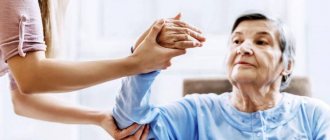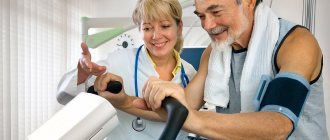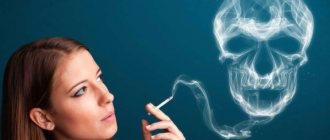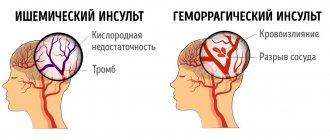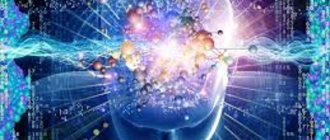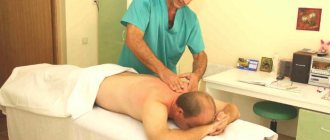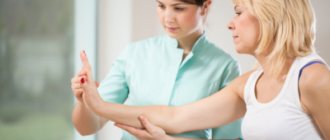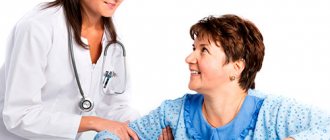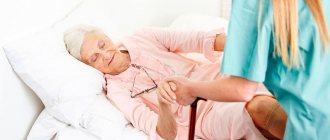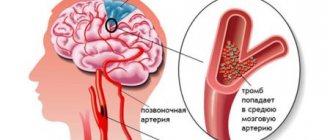Stroke is a serious disease in which many functions of the body are affected. In case of acute disruption of the blood supply to the brain, some of the cells responsible for certain actions in the body die.
After suffering from this disease, speech and motor functions suffer the most. This article will help answer many questions related to the restoration of the patient’s musculoskeletal system.
In order to understand how complete recovery is possible, you need to pay attention to factors such as:
- previous form of stroke;
- area of brain damage;
- age and general condition of the patient before the stroke;
- completeness and timeliness of medical care to the victim.
In any case, the rehabilitation process is a long-term and difficult period that requires maximum effort and dedication.
What will help restore hand mobility?
The upper limb can be developed using mechanical devices.
They are levers similar to bicycle pedals, a ship's steering wheel, or crossbars attached to a spring. At home, hand exercises are performed with an elastic bandage. It is tied into a ring and stretched with the hands, then the loop is placed at the level of the forearm, gradually moving higher and higher to the shoulder. You can even practice while lying in bed if you throw a bandage over the bar and take its ends in your hands.
Mechanical pedal exerciser for arms
The second device is a gymnastic stick. Its role can be anyone suitable in shape and smoothness. To perform the exercises, it is raised to shoulder level, behind the head, and intercepted with the hands in a vertical position. One of the simplest devices is the most common mechanical meat grinder or juicer with a handle.
Getting up
The next stage is getting up. Several exercises are used for training:
- getting up in bed - first with the help of an instructor, then a gradual transition to getting up on your own;
- movement along the edge of the bed from back to back - moving the legs on the floor and moving the patient away from the fulcrum of the legs so that he pulls them up on his own.
After long training, the patient’s muscles and consciousness are ready to stand up and hold the body in an upright position. It is important to ensure his safety, since a fall can frighten and force the patient to give up the next attempt for a long time. Standing up should occur with additional support and the help of an outsider.
Before the patient takes his first steps, standing skills are reinforced with exercises:
- Trampling is a transfer of the center of gravity from one leg to another, as if a person is shifting from one foot to another. First, the exercise is performed without lifting your feet off the floor, then you need to raise them a little.
- Rolling from toe to heel.
- Stepping over an obstacle - at first it can be a pencil, then the height is increased. When performing, the knee should rise high. Steps are taken forward and backward.
- Taking the legs back (the foot is placed on the toe).
What to do to get rid of weakness
For drug therapy of asthenic syndrome, patients who have suffered a stroke are prescribed vitamin complexes (Neurorubin, Neurobex), drugs to improve metabolic processes in brain neurons (Phenotropil, Glycine, Bilobil) and psychostimulants (Enerion, Cognifen, Entrop).
It is also important to ensure a normal amount of sleep at night. For this:
- the room in which the patient is located should be well ventilated and darkened;
- the patient’s position in bed – on the healthy side or on the back;
- the doctor may prescribe melatonin in order to restore normal biorhythm;
- take natural sleeping pills (valerian, motherwort, peony), prescription medications (Donormil, Sonovan);
- before going to bed you can drink warm milk with honey;
- relaxing breathing exercises are used, in which the exhalation should be longer than the inhalation (the optimal ratio is 1:2), you need to breathe only through the nose, without the participation of the pectoral muscles (stomach).
During the day, you need to make an effort to activate the patient:
- therapeutic exercises, massage;
- classes to restore speech and memory;
- washing with cool water, hygiene procedures;
- listening to music or audio books;
- frequent meals in fractional portions, food should not be hot;
- awakening breathing - smooth inhalation and sharp exhalation.
Watch the video about breathing exercises:
Drug therapy
Rehabilitation includes drug therapy . It is aimed at comprehensively maintaining the body’s performance, improving blood circulation, and protecting neurons.
Important. The basic principle of using drug therapy is following the doctor’s recommendations.
Appointed:
- Drugs to improve cerebral blood supply. This is Cerebrolysin, Cavinton.
- Medicines aimed at activating metabolic processes. Cortexin and Solcoseryl tablets are used. Actovegin is administered intravenously.
- Nootropic drugs. Their goal is to activate thinking and memory. They help restore brain cells. Prescribed Piracetam, Lucetam.
- Drugs that improve the transmission of impulses in the nervous system. Vinpocetine is used.
- Sedatives. Medicines of this type help relieve anxiety and calm down. Persil, tinctures of valerian, motherwort are prescribed. Glycine not only has a calming effect, it also has a stimulating effect on mental abilities.
It is recommended to take most of these medications in courses, each lasting up to six months. Physiotherapy with medications is sometimes recommended.
Recovery from an ischemic stroke includes the use of blood thinners.
Patients are treated symptomatically. Muscle spasms are relieved with muscle relaxants: Sirdalud, Mydocalm. It is recommended to treat convulsive symptoms with Phenytoin and valproic acid. The duration of the course and frequency of administration are determined by the doctor.
Why did I start feeling very sleepy?
Post-stroke asthenia is a factor that aggravates the course of the recovery period, since when it occurs, the patient loses interest in any type of activity, quickly gets tired, falls asleep during the day and experiences insomnia at night. The development of this condition is associated not only with the stroke itself. The background pathology that preceded the vascular accident also has a great influence - hypertension, diabetes, atherosclerosis, anemia, myocardial ischemia, arrhythmia.
These factors contribute to the increase in brain failure and slow down the formation of energy compounds in neurons. Age-related changes and vascular disorders reduce the transport of oxygen into cells and reduce the number of receptors in brain tissue that respond to serotonin and dopamine. An important role in the progression of asthenia also belongs to the suppression of the function of the reticular activating system, which is responsible for the level of wakefulness of the body.
The causes of general weakness in the post-stroke period can also be:
- a long period of being in a sedentary state;
- lack of positive external stimuli;
- disruption of interneuronal connections of the brain;
- monotonous diet, inability to provide enough protein and vitamins due to swallowing disorders;
- low blood pressure due to antihypertensive therapy, the use of tranquilizers, muscle relaxants, and anticonvulsants.
Manifestations of asthenic syndrome, as a rule, occur before a stroke. These include:
- fatigue, general weakness;
- reduced performance;
- headache and constant heaviness in the head;
- dizziness;
- mood swings, tearfulness, touchiness;
- shallow sleep, difficulty falling asleep;
- lack of feeling of rest after sleep.
All these signs progress against the background of a stroke, accompanied by constant drowsiness during the day and lack of sleep at night, and they are also accompanied by depressive disorders.
need shoes
Let’s look at the main requirements for these shoes and I’ll also show you with a couple of examples what these shoes look like and where to find them.
Requirements for shoes.
- Shoes should fit snugly to the surface of the body, fit well and hold the foot in the desired position. If the shoes dangle loosely on the foot, this will make the steps unstable and shaky, which increases the risk of falls and injuries.
- These shoes should be comfortable to put on, take off and secure even with one hand. With hemiparesis, strength decreases not only in the leg, but also in the arm. Sometimes, movement in her is completely lost and she cannot help put on shoes for her healthy hand. You need shoes that can be put on and taken off with one hand, and that can be secured with one hand. Fixation with laces is not entirely suitable, although it has a big plus - a good tight fixation on the leg. This disadvantage is the difficulty in lacing - this requires two working hands. With hemiparesis, there are often motor disturbances in the hand. A suitable option is shoes with fixing straps on a sticky strap.
- These shoes should not be too heavy.
Shoes with high backs will fix the ankle joint. That is, these are shoes with a high grip on the area above the ankles. This type of shoe makes the ankle joint more stable. It dangles less when walking, and the toe clings to the surface less during a step.
Fig.2. With high ankle grip.
An example of such shoes is in Figure 2.
Of course, shoes should be suitable for the season so that you feel comfortable in them - not cold or hot. It may differ in purpose - for kinesiotherapy (physical therapy) to restore walking. Or for everyday use - walking on the street, for example.
Sports shoes with high ankle grip.
- So, option one. Shoes for everyday use and walking outside in the off-season and summer. These are high-back sneakers, they are soft and light, and provide good ankle support. During hot weather, it is possible to wear sandals with equally good ankle support.
- Option two is winter shoes. Again, when choosing winter shoes, we are guided by the above requirements, as for shoes of other seasons. In fact, you can see such shoes quite often on the winter streets (lightweight fabric boots with adhesive closure). In general, you can find it.
- Option three. These are shoes that can be worn while regaining walking. Such shoes are always needed and in demand - this is something that can be worn in the physical therapy room, that is, indoors. Again, you can also choose an option from sports shoes. In addition to the same requirements, keep in mind that the soles of such shoes should not be too soft, like “shoes” or “ballet shoes”. The soft fabric sole can easily cause dangerous slipping and the risk of falling. You need a dense, stable sole - not necessarily thick.
When selecting such shoes individually, the main condition is mandatory fitting and “testing” on site. Such shoes should not only fit comfortably, but also securely hold the ankle itself, and also be stable on the surface when the center of gravity moves to this leg. Usually, when you first get acquainted with the shoes themselves, this is felt and noticeable.
Many people have problems finding and selecting such shoes. In specialized medical equipment stores, the only products that can be used for spastic hemiparesis are orthoses. Finding shoes suitable for hemiparesis is not always easy, even if you know what kind of shoes you need and what to look for when looking for them. Sometimes, loved ones bend over their heads to find it and do not always find a suitable option.
When choosing a purchase, a suitable option may be for someone close to you to search for suitable shoes first and the opportunity to try them on and return them if they do not fit.
Be careful when choosing shoes. Ultimately, such shoes are a reliable assistant in restoring walking, and this is the main step towards regaining independence and successful rehabilitation in general.
Thank you for your attention!
Author of the article: neurologist Postnikov Alexander Yurievich.
Affordable Alternative
Do not forget that in addition to expensive devices, even improvised means can be used to effectively restore the functioning of the limbs. For example, tying shoelaces, grasping small parts with your fingers, and laying out cards are excellent exercises that do not require additional financial costs.
Rehabilitation doctors recommend that stroke patients get a stepper or an exercise bike. These devices allow you to develop knee joints, help get rid of muscle weakness, and have a good effect on the condition of the cardiovascular system. At later stages of rehabilitation, you can train on the wall bars, take dumbbells (with light weight), hoops, jump rope and other well-known sports equipment.
Gymnastic balls help improve muscle tone and coordination of movements. The Rubik's Cube is ideal for developing fine motor skills and developing the upper limbs. Modeling from plasticine also solves the same medical problems.
The special post-stroke simulator “Bud” is popular among rehabilitation specialists - it is individually programmed, adjusted to each patient, and allows you to effectively develop the hands, individual fingers, and joints of the upper extremities. Thanks to this device, according to reviews from patients and doctors, already from 2-4 weeks of rehabilitation, lost sensitivity returns to the fingers, they become more mobile and dexterous.
First steps technology of correct movement
After a stroke, the tone of the muscles of the limbs sharply increases, the legs and arms cease to obey, their movements become uncoordinated. The muscle tone of the diseased limb changes its position, as a result of which the gait becomes sideways - the knee joints are overly relaxed, the foot sag.
When moving, such a leg does not make a direct movement from heel to toe with further stepping on the heel, but moves in a semicircle with support on the toe. This causes the step to slow down, the sore leg clings to the floor and the entire process of movement becomes traumatic.
Learning to step on your foot correctly and practicing the correct position of your foot are prerequisites for starting to walk. The patient himself or his assistant must ensure that:
- from the first step, at the first contact with the floor, the foot rested on the heel, and not on the toe;
- the foot moved straight, rather than describing a semicircle;
- the knee bent at the moment before the foot hits the heel.
Physical and moral support
There are various rehabilitation simulators and assistants for teaching verticalization and movement after a stroke. In a hospital setting, these can be special technical devices; at home, doctors recommend knee supports (at the initial stage) and walkers, which allow the patient not only to take the first steps, but also to return walking as a habitual skill.
Walkers are the main and easiest to learn means of transportation for people suffering from walking disorders. Their selection is carried out based on the individual characteristics of the patient. Walkers are:
- lightweight, “walking”, adjustable in height with anti-slip handles and bases;
- high, with armrests, for those patients who rely on their elbows rather than their wrists (due to their weakness);
- rigid, adjustable for patients with large body weight and large build;
- wheeled, with two or four wheels.
Stroke patients should pay attention to wheelless options, as they are more helpful in coordinating movements and are more stable. During the first training sessions with a walker, it is mandatory to secure an assistant who not only supports the patient, but also controls the correct position of the foot, its straight movement, as well as flexion of the hip, knee, and ankle joints.
The assistant must find a comfortable position that provides the necessary support, the ability to easily push the patient’s hip, and the ability to correct an oblique step
During the first training sessions with walkers, it is mandatory to secure an assistant who not only supports the patient, but also controls the correct position of the foot, its straight movement, as well as flexion of the hip, knee, and ankle joints. The assistant must find a comfortable position that provides the necessary support, the ability to easily push the patient’s hip, and the ability to correct an oblique step.
Physiotherapy
Exercises that are done after a stroke to restore motor activity and develop walking skills are selected taking into account the nature of the damage, for example, the type of paralysis. With paresis and paralysis of the peripheral type, muscle hypotonia (decreased tone) up to atony (lack of tone) is observed.
Paresis and paralysis of the central type are accompanied by an increase in muscle tone up to the development of hypertonicity of the spastic type. In the first case, the exercises are aimed at normalizing blood circulation, stimulating normal nerve impulses, improving trophism (structure and function) of tissue, and strengthening muscles.
For central paresis, exercises are performed to relax the muscles, eliminate spasticity and reduce muscle tone. The doctor will individually select a suitable complex of therapeutic exercises. An approximate set of exercises that will help both restore a leg after a stroke and practice gait skills:
- Exercise 1. In a supine position (on your back), lift your left and right legs alternately. Raising the limb is done while inhaling, lowering it while exhaling.
- Exercise 2. From a position lying on your back, alternating your legs, bend them at the knee joints and pull them towards your stomach. Perform flexion while inhaling, extension - while exhaling.
- Exercise 3. Take a horizontal position on your back, extend your arms along your body, bend your legs at the knee joint, rest your feet on the floor. Spread your knees apart and bring them together.
- Exercise 4. From a horizontal position on your back, place your arms along your body and move your outstretched legs together. Raise your limbs and make rotational movements, simulating pedaling and riding a bicycle.
- Exercise 5. From a horizontal position on your side, alternately raise and lower your upper leg. Raising is done by inhaling, lowering by exhaling. After 10 swings, turn to the other side and repeat the exercise.
- Exercise 6. Take a horizontal position on your back, arms along your body, legs bent at the knee joint. Squeeze the ball between your knees for 5-10 seconds.
- Exercise 7. Take a horizontal position on your back, your arms are along your body, your legs are closed and extended. Pull the toe forward, then forcefully point it back, pulling the heel forward, the movement is repeated several times, alternately with different legs.
You need to practice each position 5-10 times. Regular exercise will normalize muscle tone and restore joint mobility. If the patient is inactive and cannot control the limb, do passive gymnastics. An assistant (nurse, caregiver) bends and moves the patient’s limbs in a given sequence. Simple activities that you need to do while walking down the street will help you learn to walk after a stroke:
- Step on the curb with your injured leg and step on the asphalt with your healthy leg.
- Walk on the curb with both feet.
- When moving, deliberately take wide steps (increase the distance between your feet).
- Walk along parallel lines drawn on the asphalt. The distance between the lines exceeds the width of the shoulders so that the legs are bent at the knee joints when moving.
Doctors recommend walking in the fresh air for at least 1 hour every day. To restore motor function after a stroke, you need to regularly lightly load the damaged limb and walk until a feeling of fatigue appears in the muscles.
Features of rehabilitation training
The duration of classes, the set of exercises, and the dynamics of recovery should be monitored by a specialist. The organization of the training process after a stroke is influenced by the following factors:
- the extent to which the hemorrhage affected brain functions;
- characteristics of the body, the health of a particular patient;
- effectiveness of medication and physiotherapeutic treatment.
For almost all patients, the first six months after a stroke are the most difficult. If the patient does not fall into a coma, then on the third day after the incident you can already perform simple breathing exercises (to avoid congestion in the lungs). Approximately on the 5th day, they begin simple gymnastics, which is supplemented with effective physiotherapeutic procedures:
- oxygen baths;
- massage;
- myostimulation;
- acupuncture, etc.
Alternative and no less effective may be more accessible equipment and methods - gymnastic sticks, balls, horizontal bars, plasticine modeling, etc. Even basic exercises performed in the “lying”, “sitting”, “standing” position in combination with massage , demonstrate excellent results in the later stages of rehabilitation.
The doctor prescribes the necessary exercises and training on simulators depending on the patient’s condition and how much the stroke affected his physical and emotional health. It is not recommended to perform any actions without the knowledge of the doctor; this can significantly worsen your health.
During the rehabilitation period, all activities are aimed at restoring motor function, relieving muscle hypertonicity and strengthening them, and improving the psycho-emotional state. The most suitable solution is to use various simulators. With their help, you can significantly improve blood circulation and prevent muscle atrophy.
Exercise equipment for restoring arms and legs after a stroke
Belt transmission of loads, autonomous power supply. The simulator allows you to change the angles of inclination and rotation. Cost - from 5330 to 5450 rubles.
Equipped with a pulse activity reading sensor. Convenient control panel, has 10 stages of loads, 6 training exercises. Price – 13380-14990 rubles.
Convenient manual assembly and disassembly, automated calculation of loads and distances. Cost – 24990 rubles.
13 training levels. Equipped with manual control. Raising the canvas up to 3 levels. Price – 29790-32890 rubles.
Trains the abs, back, lower back, arms, legs and pectoral muscles. Has varying degrees of severity (up to 45 kg). The price is 45,000-45,131 rubles.
Exercises injured legs by simulating walking. Can be used for people with both legs paralyzed. The cost of the simulator is 12580-13580 rubles.
They allow you to strengthen your grip, act in flexion-extension mode, and restore the function of nerve endings. Price – about 1500 rubles.
The “Bud” device is considered the most effective means for developing hand fingers. In 80% of cases after a stroke, patients lose mobility and flexibility of the joints, which this simulator will help restore. In order to prevent negative consequences, training on the simulator should begin as early as possible.
There are many devices for restoring leg mobility in bedridden patients; the most common is a simulator such as the Shagonog 409. Its action is based on imitation of walking, which allows you to passively prepare the patient’s musculoskeletal system for rising to his feet. Training on this simulator can be performed throughout the day, it does not take away the patient’s strength.
Important! This simulator is aimed only at extension and flexion of the limbs; other actions can lead to injury to the joints and damage to the apparatus.
Massage to restore walking
It is difficult to overestimate the role of massage in restoring all body functions after a stroke. This is especially true for motor injuries. An experienced massage therapist does not use certain strictly limited techniques. He always takes into account the patient's condition and empirically finds an individual way of massage.
It is not only the paralyzed leg or arm that is massaged. The entire damaged side of the body is massaged, from the scalp to the toes. The procedure effectively restores blood circulation in numb skin and muscles, as well as the sensitivity of nerve endings. Massage courses begin 3–4 days after a stroke and should continue over the next year or even two years. A regular manual massage can be successfully complemented by hydromassage and an underwater shower.
How to learn to use a walker
As soon as the patient learns to stand confidently on his feet without support, he can begin to take his first steps. You can’t do this without an assistant, since he must belay from the paralyzed side to prevent a fall.
The assistant’s task is not only to support the patient, but also to control the correctness of his gait. When the patient moves with the help of a walker, it is necessary to ensure that the placement of the foot, rotation of the knee and hip joint are correct.
The whole process has several features:
- The patient cannot fully grasp the assistant's hand, since it is weakened.
- To take a step, he needs to throw his leg forward, which leads to the helper's leg catching.
- It is much more convenient to support the patient from a healthy part of the body, but the knee joint will not be fixed and the patient will not be able to hold on to the wall with his healthy hand.
The main purpose of using a walker is to gain the ability to bend the leg in all joints, otherwise the patient will constantly cling to the floor with his foot. The assistant should remind the person that the leg should be raised higher and bent at all joints.
High boots that fix the ankle joint will help facilitate movement. The affected arm should be secured with a scarf so that it does not sag during movement and the head of the humerus does not come out of the socket. During exercise, you should monitor the patient’s heart function and give him rest.
Once the patient can move with the help of a walker without assistance, he or she can begin to walk independently. This is done with the help of a cane, holding on to the walls, moving a chair in front of you
But it is important to ensure that the load is evenly distributed. You can’t spare the sore leg by relying more on the healthy one.
The process of learning to walk
To choose the right program for restoring walking, you need to be able to distinguish the signs of a musculoskeletal disorder:
- unsteadiness of gait;
- inability to fully bend or straighten the limbs;
- impaired coordination of movements;
- decreased sensitivity;
- walking on toes;
- inability to walk quickly.
As mentioned above, treatment with physical exercises must begin from the beginning of the second month.
How to start
There are 4 main stages that precede independent walking.
Stage 1 – passive exercises. These are the very first exercises in a lying position - fixing the limbs in different positions.
All passive exercises are conducted by a rehabilitation specialist. First, he independently warms up the limbs, then connects the patient’s muscle memory. To do this, exercises are performed first with a healthy leg or arm (as a rule, one hemisphere suffers during a stroke), and after the movement they are mentally transferred to the affected limb.
Passive exercises include:
Stage 2 – active exercise and sitting training. After a set of passive exercises, the patient has more strength for new skills. At this stage, you can include the following exercises:
- throwing legs over one another;
- bending and straightening the legs at the knees while lying on the stomach;
- "bike";
- turning the feet from a lying position with bent knees;
- move the heel of the foot along the shin of the other leg;
- lifting with legs moving to the sides;
- lifting the pelvis from a lying position with bent knees;
- raising legs while lying on your side;
- turning to one side.
The last exercise is necessary for further correct sitting. In order to sit the patient down, you need to release your legs to the floor and spread them wider, push off the bed with your healthy hand and take a sitting position.
Read also: Stroke while driving
Stage 3 – learning to get up and stand. When training the process of standing up, the following exercises are used:
- lifting the body while lying on the bed;
- moving along the bed.
After consolidating the exercises and gaining knowledge, the patient can try to stand up.
IMPORTANT! When first attempting to stand up, the patient must be accompanied by a rehabilitation specialist! A fall from muscle weakness can cause shock and delay the rehabilitation process for a long time!
Before the patient himself can take the first steps, it is necessary to do some steps:
- stomping on the spot without lifting your feet off the floor, raising your feet a little later;
- rolling the foot from heel to toe and vice versa;
- stepping over an obstacle - at first it should be something low, with the development of skill the obstacle is increased;
- moving the foot back with support on the toe.
Stage 4 – restoration of the walking process. At this stage, the patient, with the help of a doctor or special assistant, tries to take the first steps. During this period, it is advisable to use special walking devices, for example, three- or four-legged walkers.
Walkers are quite heavy and at first will serve as a great support for the victim.
After the patient learns to stand confidently with a walker, then with their help he will be able to move his legs, thereby stepping forward.
It is worth noting that it is necessary to select and adjust the walker correctly so that the rehabilitation process proceeds as quickly and comfortably as possible.
There are different types of walkers on the market, so you can freely choose which one is suitable for a particular patient.
It is worth paying attention to the universal design. These walkers can work as fixed, stationary and walking.
Quick results
For the fastest possible recovery effect, it is necessary to constantly consolidate all the skills acquired during this period with additional exercises and warm-ups. The recommended time for daily exercise is 30 minutes 2 times a day.
If the patient feels strength or, conversely, weakness, then this time must be adjusted depending on the situation.
If a person already knows how to stand up on his own and take steps with support, it is necessary to gradually complicate the activities, for example, by walking on sand or grass. After consolidating these exercises, you need to move on to more complex ones - climbing to small elevations, gradually bringing them to climbing stairs.
To make exercise more comfortable and achieve maximum effect, you must wear special orthopedic shoes that secure the foot.
It is also very important to teach the patient to be independent. He can and should be helped in everything, but not done for him.
The main rule for a quick and effective rehabilitation process is constant exercise with a gradual increase in loads and following all recommendations prescribed by the attending physician.
We invite you to watch an interesting video on the topic:
How to learn the correct gait
After the patient has been able to sit down, stand up and take the first steps independently, it is necessary to use special fixing devices in the exercises to help the correct formation of gait. These include:
- holders for fixing the foot - for proper distribution of weight on the foot and avoiding walking on the toes;
- clamps - knee pads - to hold the knee joint in a vertical position.
One of the effective methods for developing the correct gait is to draw footprints for the patient to walk. This technique is common in rehabilitation centers.
You can also use special treadmills to develop your gait and speed up the recovery process. This device has special extended handrails, the lowest possible speed and an emergency braking button.
IMPORTANT! When performing rehabilitation exercises, you should not rush, even if everything works out; At a rapid pace, one can become accustomed to a comfortable but incorrect position of the ankle joint.
If possible, it is recommended to include Nordic walking in your list of activities.
Emotional-volitional disorders, post-stroke depression
Depression is often one of the consequences of a stroke. Many relatives of patients consider this problem to be insignificant or deny its existence altogether; for them it is much more important that movements and speech are restored. But such an attitude to this problem entails consequences. Very often, against the background of depression, restoration of lost functions is slow, and exercises become ineffective. With depression, motivation decreases to the point of its complete absence, existing cognitive impairment intensifies, the patient cannot and does not want to understand tasks and instructions. The patient becomes adynamic and inhibited. With the passive participation of the patient, the effectiveness of rehabilitation is minimal.
Appetite may also decrease, but if the patient does not eat after a stroke, this leads to nutritional deficiency, which also complicates the rehabilitation process.
The cause of post-stroke depression can be either damage to certain areas of the brain or awareness of the depth of the problem with preserved criticism.
In this situation, not only the help of a psychologist is required, but also the use of antidepressants. The course of treatment should last at least 6 months.
Motor dysfunction
Paralysis of the lower extremities in ischemic stroke is observed in 80% of cases. Also, the legs can be paralyzed due to hemorrhagic hemorrhage, but most often it disrupts the functioning of only one leg. Such consequences are explained by the fact that after a failure of blood circulation, the areas of the brain that respond to movement are left without power. At the same time, all the impulses that the brain sends to the limbs cannot reach the goal. The result is the inability to control individual or all muscles.
How violations may manifest themselves:
- The gait becomes very unsteady, the person may sway to the sides;
- The leg does not straighten or bend;
- When moving, the injured leg describes a semicircle, reminiscent of turning a compass;
- The person stands on his toes and finds it difficult to stand on his entire foot.
Restoring contact between the brain and muscles, learning to walk, and regaining the ability to control the legs are the main tasks for the rehabilitation period. This may require a lot of time and patience. In most cases, it takes 3 to 4 months to restore motor function. Sometimes this period can last even longer, because... everything is complicated by the patient’s fear of not achieving results, lack of motivation and decreased cognitive functions.
A stroke is a very strong blow not only to the body, but also to the psyche. Therefore, the support of loved ones is very important for the patient. Their task will be to provide comfortable conditions for the rehabilitation of the victim. It is important to try to rid him of fear, convince him that there is no need to be afraid, constantly communicate with him and help him in everything.
Impairment of motor function can occur even if the stroke affects the spinal cord and not the brain.
Restoring memory, vision and speech after a stroke at home
Stroke is a serious and complex disease that can affect patients’ musculoskeletal function, speech and memory. Full or partial recovery after a stroke is possible even in an elderly person with additional pathologies.
The process can be long and difficult, so a person must be prepared for this in advance if he wants to restore lost functions. Complete rehabilitation of brain function is possible in 70% of patients. Everyone else can only count on partial.
How long it will take depends only on the type of stroke that occurred, the general state of health and his desire to return to full activity.
A stroke is accompanied by oxygen starvation of the nerve cells of the brain, their death, rupture of blood vessels and capillaries, hemorrhage and flooding of all hemispheres of the brain. On average, an attack lasts from three hours to a day
Despite the fact that the symptoms sometimes go away, it is important to go to the hospital, because the nerve cells have already begun to die, and the brain faces irreparable consequences. After an attack, a person faces:
- loss of physical capabilities
- speech and mental disorders
- memory loss
- motor coordination disorder
- difficulties with writing and vision
- •inflammatory processes and infectious diseases
Recovery takes from three to five months, if we talk about moderate, mild severity of the consequences, as well as the primary attack. But for retirees, people over 50, the rates are slightly higher: they need six to eight months to fully recover. The body of older people struggles longer with the consequences, cells are almost not renewed, and there are also a lot of chronic diseases of the heart and blood vessels.
After a stroke, the patient must spend at least three weeks in the hospital for diagnosis, collection of tests and receiving hospital care. This is necessary to establish an accurate diagnosis, detect foci of inflammation and develop a course of treatment.
The rehabilitation process itself is usually divided into several stages, which differ in time, methods and approximate results. There are acute periods, acute, subacute, early recovery, late recovery and the period of long-term consequences.
How to sit down by yourself?
When can you start getting up?
Types of pathology
Doctors distinguish two main types of stroke, each of which has its own characteristics. Pathology is divided into the following types: ischemic and hemorrhagic. The first option is much more common; it is diagnosed in approximately 80% of cases.
During an ischemic attack, a blockage of the vessel occurs, which can be caused by a blood clot or atherosclerotic plaque. Because of this, blood flow is disrupted and subsequent death of brain tissue occurs. If measures are not taken in a timely manner, then death may occur.
The ischemic type is easier to treat, and it is also easier to recover from it. If you call an ambulance in a timely manner, then there will be a chance to return the person to normal life. In this case, there will be negative consequences in any case, and they will have to be dealt with after the patient’s condition improves.
Hemorrhagic stroke occurs in approximately 20% of cases . In this situation, the vessel ruptures, which can occur due to the thinning of its walls. Hypertension often leads to the problem, because the brain cannot withstand regular pressure surges. To prevent an attack from occurring, it is extremely important to first take care of your health and take preventive measures.
A hemorrhagic stroke is much more difficult to bear; during it, a hemorrhage occurs in the brain. A person experiences more negative consequences that arise due to disruption of the organ.
There are many factors that lead to the appearance of pathology. In most cases, it is caused by other diseases, which are often chronic. If a person does not want to experience pain in the legs after a stroke and suffer from speech impairment, then he will definitely need to eliminate negative factors from his life and, if possible, carry out disease prevention.
Atherosclerotic plaques appear in the brain. Because of them, the lumen in the vessels becomes blocked, and as a result, a person may experience acute circulatory disorders. Actually, diabetes mellitus leads to the same result.
Read also: Alcohol after a stroke
If a person smokes and drinks alcoholic beverages, then he may be more likely to experience a stroke. It is for this reason that it is important to get rid of addictions, so that later you do not have to suffer from various diseases. Excess weight in general significantly increases the load on the body . It is for this reason that it is important to control the condition of your body so that you do not have to suffer from problems with blood vessels later.
Some people prefer to sit more and move less. Such behavior cannot be called correct, because it has a bad effect on well-being. If a person has to lead a sedentary lifestyle due to work, then it is imperative to find time for walking and also for playing sports.
Some people, on the contrary, get too tired, for example, due to regular weight lifting. There are also those who are forced to spend the whole day on their feet and not sit down even for a few minutes. As a result, the body will suffer from overwork, which is why you need to reconsider your lifestyle. In another situation, you may encounter health problems.
If a person is forced to constantly be nervous, then he may develop health problems. It can be recommended to strive for a calm lifestyle and respond more easily to troubles. In another situation, you may experience significant damage to your health.
It is also important to note that high blood pressure often leads to an attack, because it has a detrimental effect on blood vessels. It is important to keep it under control, otherwise you will have to face negative consequences later. Age plays an important role, because it is older people who most often experience a stroke. This is explained by the fact that over the years the arteries become thinner and lose their elasticity.
As a result, they become prone to rupture or blockage. If a person tries to avoid negative factors, then his health will improve significantly. There will also be a chance to avoid an attack, which is extremely important for maintaining the body in normal shape.
Some people may not immediately realize that they are having a stroke. This is explained by the fact that during an impact consciousness is often disturbed. As a result, a person may suffer from negative manifestations of pathology. To improve the situation, it is extremely important to take timely measures for successful treatment.
Often, some time before an attack, warning signs arise that are a direct reason to visit a doctor. Let’s say that ischemic attacks may appear, which in their manifestations are similar to a stroke. The only difference is that all symptoms disappear within a few hours, less often they can last up to one day. In this case, a person may experience headaches, problems with speech and coordination.
It is imperative to know the main symptoms of a stroke in order to recognize an attack in time. The headache does not have a specific localization and occurs suddenly. It can often happen even during sleep, causing a person to immediately wake up . In this case, the headache cannot be eliminated with the help of conventional medications, for this reason it is extremely important to consult a doctor immediately.
Dizziness appears even in a calm state and intensifies with movement. It is not recommended for a person to stand up to avoid falling. The patient may not remember recent events and even the names of close relatives, as well as information about himself. Much will depend on how extensive the brain damage is.
The patient has difficulty speaking and understanding other people's speech. Difficulties may arise with the pronunciation of sounds, as well as with the selection of words. Thoughts may be confused, causing the person to ramble incoherently. Tinnitus can be either temporary or permanent. In addition, the eyes may darken, which indicates a violation of cerebral circulation.
Increased restlessness, aggressiveness and generally atypical behavior for a person. At the moment of impact, the patient may behave inappropriately, which is associated with blockage or rupture of blood vessels. Nausea and vomiting are observed against the background of other signs, but do not serve as the main symptoms.
Walking after a stroke is often difficult because the person suffers from numbness in the limbs during the attack. It is for this reason that it is extremely important to start treatment on time and take care of proper rehabilitation. Considering the fact that a person is often in an inadequate state, such a task falls on loved ones and doctors.
Types of walkers
Good afternoon, dear readers, today we will learn how to choose a walker. To learn to stand up and walk, in addition to parallel bars and knee support, a walker is used. There are several types of walkers, let's talk more about each of them. After a stroke, as I often said, you simply need fresh, clean air, and if you decide to buy a plot of land, I recommend that you find out how to build a fence in your country house, in this case you may need the material that is available in the shopping center and store Samdom.com.ua , you may also be interested in new buildings in Krasnodar
If you have good balance and grip strength, then a walker will be a useful device to help you move. The main task of a walker is to provide you with stable support when moving.
Walker types:
1. folding walking ones (photo at the beginning of the article) These walkers, like most, are adjustable in height, foldable, have rubber anti-slip handles, and also have a very light weight of about 300 grams because made of aluminum. This is the most common type of walker - they can be made both walking and adjustable by switching a special lock.
2.Adjustable. Fixed in one position, do not walk, i.e. you take a couple of steps and move the walker forward a little - it is suitable for stronger people or simply older people, although someone can help you move. They are also lightweight and foldable. These walkers often have 2 levels of holding - lower and higher, to make it easier to stand up.
3. On wheels.
There are 2 options - only with front wheels and completely on wheels.
They are intended more for movement on the street, although there are models for home use. Some models also fold. Street ones usually have brakes and a built-in bag (in which you can put personal items). They are very convenient and safe.
4. Heavy, high with armrests.
These walkers weigh an average of 18 kilograms, they also look impressive and reliable, they will be convenient to use for people with weak wrists because you can almost lie down on them while standing. In these walkers, your elbows and shoulders will rest on special bolsters. They also have 4 wheels, but without brakes, only at the bottom of the walkers there are wheel stops. They are intended only for home use, they are quite convenient to move, but they are not convenient to stand in and they are quite bulky.
Walkers cost from 2000 to 8000 rubles, depending on the model. You can also rent them or get them from the Social Insurance Fund if they are registered in the IPR, they are also always available in hospitals, but availability in other medical institutions must be checked.
From ordinary walkers you can make a simple but very effective simulator for learning to stand up, which is shown in the video in the article knee support.
In general, the choice of walkers is quite large and you can choose those that suit you or your relative.
If you find the article useful, share it with a person in trouble
How to recover from a stroke with depression
One of the typical manifestations of a stroke is the occurrence of depressive reactions. This is a natural consequence of the patient’s loss of ability to work, the ability to self-care, as well as dependence on outside help, disruption of life plans, abandonment of previous interests and hobbies, fears for life and the possibility of recovery in the future.
The difficulty in determining depression in patients who have suffered an acute cerebrovascular accident is due to the fact that due to changes in the functions of neurons, not everyone is aware of the presence of a depressed mood. Patients often deny manifestations of bad mood, despite the fact that caregivers notice significant personality changes.
Sometimes it is possible to develop hidden or atypical forms of this disorder; they are disguised as complaints of pain in various parts of the body, loss of appetite, and sleep.
Signs of astheno-depressive state include:
depressed mood almost all day; tearfulness; loss of interest in the environment; constant weakness; inability to taste food, refusal to eat; insomnia and increased sleepiness; lethargy or excessive excitability, aggressiveness; inability to maintain attention; thoughts about death.
The most severe forms occur in the presence of a focus of necrosis in the frontal lobes and the left hemisphere (right-sided paralysis of the limbs), but such a complication is also possible with damage to the stem part.
The development of depression can begin in the first week of a stroke, and in the early recovery period (after 3 months) it manifests itself in almost half of the patients and persists throughout the year.
This significantly reduces the patient's activity and rehabilitation opportunities, as many people refuse to exercise and take medications due to depressed mood.
For treatment, medications from the group of antidepressants are used; they eliminate serotonin deficiency in the brain. For elderly people, Cipramil and Cipralex are indicated. Some doctors use drugs with an activating effect even to prevent disorders in patients with a history of depression. This comprehensive therapy improves the stroke victim's efforts to recover.
Reading as one of the options for keeping a bedridden patient occupied
Non-drug methods include psychotherapy. Classes with a psychologist help the patient understand the situation, increase self-esteem, and give confidence in their abilities. It is considered most appropriate to conduct sessions of cognitive behavioral therapy. It includes three successive stages:
- logical analysis – detection of erroneous judgments;
- empirical analysis - practicing techniques for the correct reaction to events and one’s condition;
- pragmatic analysis – choosing the most appropriate behavior.
Weakness after a stroke is associated with impaired brain coordination of the force of muscle contractions, residual manifestations of paresis or paralysis of the limbs.
We recommend reading about ischemic stroke in the elderly. You will learn about risk factors in old age, symptoms of ischemic stroke in the elderly, first aid before the ambulance arrives, diagnosis of the condition and treatment in a hospital.
And here is more information about rehabilitation after a stroke at home.
Asthenic syndrome appears due to a decrease in energy production in neurons and the functioning of the reticular formation. Treatment requires comprehensive rehabilitation using gymnastics, massage, and reflexology. To overcome drowsiness, you need to normalize night sleep and increase motor and mental activity during the daytime.
Medications are used to correct asthenia and depression; many patients are prescribed psychotherapy sessions.
Restoring intellectual functions
Typically, a stroke leads to impairment of memory, the ability to think, analyze, and anticipate consequences. Patients often resemble small children.
The memory restoration technique includes exercises for repeating syllables, numbers, and later words. At the first stage, it is necessary for the patient to be able to say what he just heard. Gradually, the gap between the perception of information and its repetition will increase.
Drawings, including children's drawings, are used so that the patient can name what is presented on them. Subsequently, comparisons are made and attempts are made to compose sentences and stories. Such tasks train memory and thinking.
Board games, conversations, and crossword puzzles are useful for restoring intellectual functions after a stroke.
People with relatively intact intelligence are recommended to engage in hobbies, read, watch and discuss films and plays.
